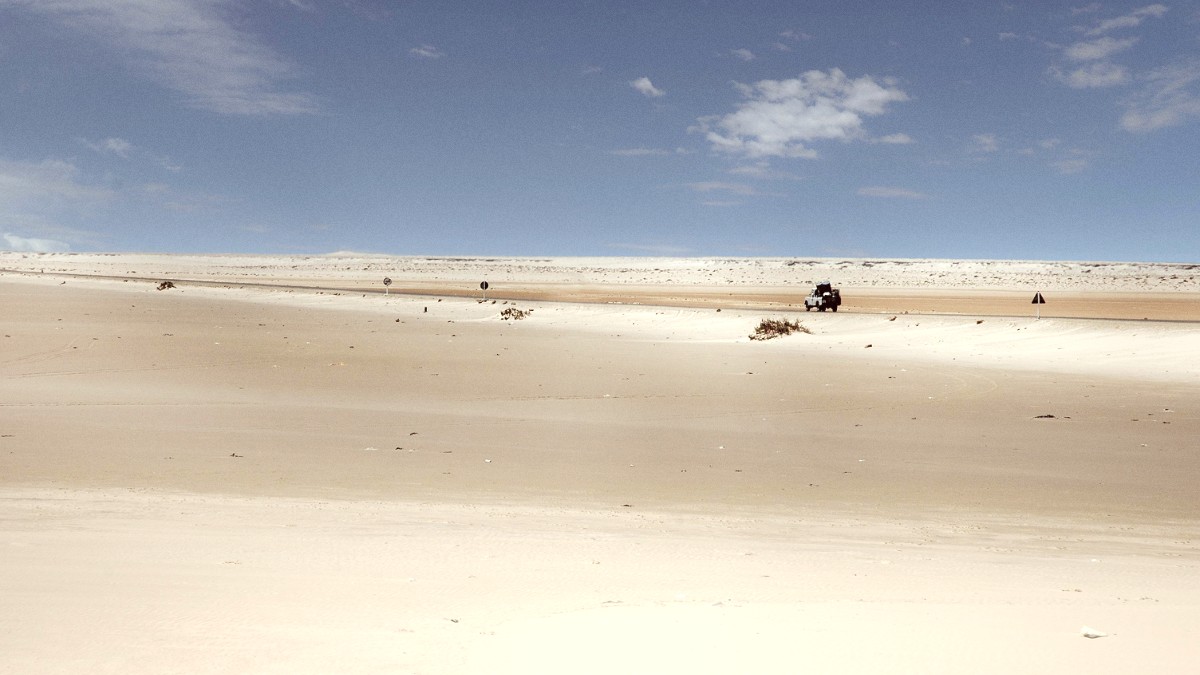
Morocco
The Dakhla Peninsula & Lagoon is the most iconic feature. A long, narrow peninsula creates a vast, calm, and shallow lagoon. It is a natural wonder and the heart of Dakhla's water sports scene.
The Dakhla City Corniche is a waterfront promenade offering views of the lagoon and city. It is a popular spot for evening strolls. The Dakhla Lighthouse (Phare de Dakhla) is a historic landmark that offers panoramic views of the city and the ocean.
Cultural immersion is mainly found through interacting with locals.
Excellent for birdwatching, especially flamingos and various migratory birds. Consider bringing Nikon Aculon A211 10x42 Binoculars for bird spotting.
Occasional sightings of desert wildlife like fennec foxes or gazelles occur on desert excursions.
A unique geological formation.
Ain Asmaa, a natural sulfur spring, is a popular spot for its therapeutic properties.
Foum Labouir (surfing), Pointe de l'Or (fishing, waves), Portorico Beach (secluded).
Discover less-traveled spots in the region.
A wild and beautiful coastline south of Dakhla. Popular for fishing and solitude. Requires 4x4 access.
Further south from Dakhla, these are ecologically important areas with rich birdlife. A multi-day expedition and special permits are needed. Less accessible to the casual tourist.
Beyond the main market, explore smaller local souks for a more authentic glimpse of daily life.
The broader Western Sahara region offers remote desert landscapes, but tourism infrastructure is very limited beyond Dakhla.
The White Dune at sunset or sunrise, kiteboarders on the lagoon, flamingos in the lagoon, and starry desert nights (away from city lights).
Consider guided tours for safety and local insights into these remote areas. GetYourGuide offers various excursions.
Explore Dakhla's attractions using interactive maps available online or through tour operators.
Check for visitor information centers for updated local events and attraction details.
Dakhla does not have major museums or significant cultural institutions for tourists. Limited cultural centers exist for local community events, but they are not typically tourist attractions.
Discover unique aspects of Dakhla's environment and culture.
The region's true charm lies in its untouched natural spaces and the unique blend of desert and ocean.
Understand the desert ecosystem's resilience and unique flora and fauna.
The lagoon and ocean are home to diverse marine species.
Understand the traditional way of life of the Sahrawi people.
Engage respectfully with the local community to gain authentic insights.
Engage in local life for a understanding of Dakhla.
Experience the daily fish market, where fresh catches are brought in from the Atlantic.
Take a 4x4 drive into the nearby desert to feel the vastness and silence of the Sahara.
Wander through the local souk (market) for authentic goods and everyday life observation.
Specializes in desert excursions and cultural tours.
Offers a range of activities, including sandboarding and lagoon trips.
Focuses on boat trips, fishing excursions, and oyster farm visits.
Provides authentic desert bivouac stays and multi-day expeditions.
A global platform for booking various Dakhla attractions and tours online.
Browse tours on GetYourGuideWhile Dakhla's terrain presents challenges, some attractions are more accessible than others.
Many natural attractions require specific vehicles and planning.
While official cultural institutions are limited, local interactions and informal observations in the city and market provide a rich cultural experience.
Be open to conversations and spontaneous encounters with residents.
Immerse yourself in the stunning vistas that make Dakhla unique.
Miles of untouched coastline offer solitude and breathtaking views of the Atlantic Ocean.
The vast, shallow lagoon creates ideal conditions for kiteboarding, with colorful kites dotting the horizon.
The stark beauty of the desert with its changing dunes offers unique photo opportunities and a sense of vastness.
Witness the stunning colors as the sun rises over the calm waters of Dakhla Lagoon.
View imageCapture the stark beauty of the White Dune contrasting with the blue lagoon.
View imageDynamic shots of kiteboarders on the water, harnessing Dakhla's consistent winds.
View imageAway from city lights, the desert sky reveals a spectacular display of stars.
Observe elegant flamingos and other migratory birds in the Dakhla Lagoon's shallow waters.
While Dakhla is not famed for historical architecture, certain elements of its past remain.
Public art and markets add to the city's character.
For landscape photography, consider shooting during the early morning or late afternoon to capture the soft, warm light.
For city scenes, the bustling activity of the central market provides dynamic subjects.
Immerse yourself in the local culture for a richer Dakhla experience.
Respectful interaction with the Sahrawi community offers an unique cultural exchange.
Discover the craftsmanship of local artisans.
While formal cooking classes are rare, some resorts or local hosts might offer informal demonstrations.
Inquire at your accommodation or with local tour operators for any available sessions.
Experience the traditional sounds of Sahrawi music.
These are often informal and spontaneous, reflecting the local community spirit.
Experience Dakhla's cultural vibrancy during specific annual events.
Check local calendars for exact dates as they vary year to year.
Dress modestly, especially when visiting local markets or religious sites, to show respect for local customs.
A simple "Salam Alaikum" goes a long way. Handshakes are common, but women might prefer a nod or a hand over the heart.
Always ask permission before photographing individuals, notably women and children.